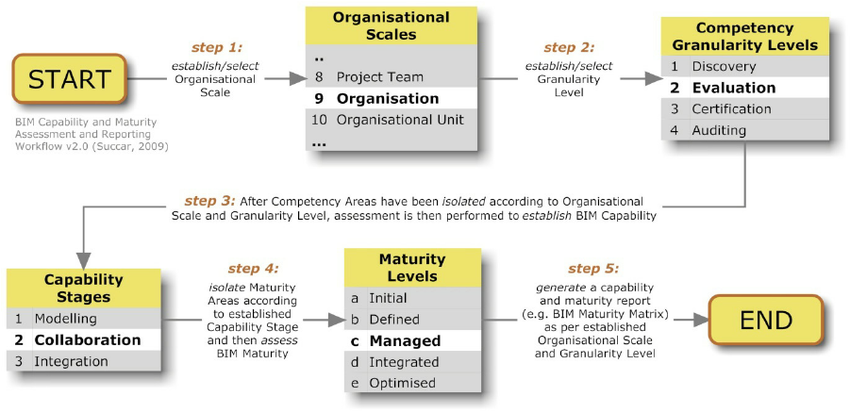Published on May 18, 2010 | Last Updated on September 13, 2025
As it complements the previous post quite nicely, BIM ThinkSpace’s readers may be interested in reviewing my latest conference paper which has just been published. Please read its abstract below and – if sufficiently interested – proceed to downloading the full paper from here:
Building Information Modelling (BIM) is an expansive knowledge domain within the Design, Construction and Operation (DCO) industry. The voluminous possibilities attributed to BIM represent an array of challenges that can be met through a systematic research and delivery framework spawning a set of performance assessment and improvement metrics. This paper identifies five complementary components specifically developed to enable such assessment: [1] BIM Capability Stages representing transformational milestones along the implementation continuum [2] BIM Maturity Levels representing the quality, predictability and variability within BIM Stages, [3] BIM Competencies representing
incremental progressions towards and improvements within BIM Stages, [4] Organisational Scales representing the diversity of markets, disciplines and company sizes and [5] Granularity Levels enabling highly-targeted yet flexible performance analyses ranging from informal self-assessment to high-detail, formal organisational audits. This paper explores these complementary components and positions them as a systematic method to understand BIM performance and to enable its assessment and improvement.
…
In my view, the key deliverable of this paper is the below Visual Knowledge Model (VKM) which summarizes the overall BIM performance assessment and reporting workflow:

Fig. 1 BIM Capability and Maturity Assessment and Reporting Workflow Diagram
The intention behind this paper is to introduce a ‘conceptual tool’ to assess Organisational BIM (without actually using this term) through a performance management lens. That is, the paper introduces a set of complementary components and a simple workflow (simple doesn’t mean effortless) to assess BIM capability and maturity in a consistent, systematic and ‘certifiable’ way. This of course depends on several metrics (some are still being developed/tested by the industry) including the assessment of the ‘product model’ itself as a means for assessing the individual/organisation/team which generated it. I understand that this will need some elaboration and will try to provide it at a later stage (I’m still travelling at the moment)….Also, I would like to try something different this time: if I receive enough interest from readers, I’ll invite those who email me or comment below – both supporters and skeptics – to an online presentation sometime in June 2010. Cut-off date for receiving interest is end of this month.
Cite as: BIMe Initiative (2025), 'The Five Components of BIM Performance Measurement', https://bimexcellence.org/thinkspace/five_components/. First published 18 May 2010. Viewed 10 December 2025
